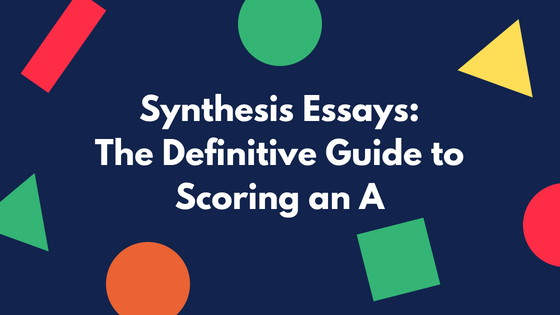
When it comes to academic writing vs business writing, MBA students often feel like they’re “living in two worlds.”
On the one hand, you submit traditional academic papers; on the other, you create professional business documents. These are two distinct skill sets, each with its own goals, audiences, and conventions.
Naturally, juggling them can be tricky. As an academic writer, you follow formal structures; as a business communicator, you aim for clarity and action.
So, why does this matter?
Understanding these key differences can sharpen your skills and guide you on when to seek assignment help for tough projects.
Academic Writing vs Business Writing: What You’re Writing and Who You’re Writing For
When discussing academic writing vs business writing, it’s important to recognise that the two differ not just in style, but also in why they are written and who they are written for.
You need to understand these differences to help you adapt more effectively, whether you are preparing a graded MBA assignment or just writing a workplace report.

The Purpose and Audience of Academic Writing
To begin with, academic writing is primarily about knowledge and learning. In an MBA program, academic assignments, whether essays, research papers, or case analyses, are designed to help you educate yourself on a topic and demonstrate to your instructors what you’ve learned.
The overarching goal is to analyse theories, share knowledge, and showcase mastery of course material, and there’s the clear aim of earning a strong grade.
Because of this purpose, the audience for academic writing is usually a single, knowledgeable reader. In most cases, this will be your professor (and perhaps a few peers). This means your instructor already understands the subject matter.
As a result, you can dive more into the analysis, theory, and evidence without having to simplify the concepts. Your aim is to inform and impress, showing not only that you understand the content but also that you can apply it critically.
Moreover, the context is structured and formal. Academic writing typically follows a set format (introduction, body, and conclusion). These are supported by credible sources and proper citations. The language is formal, precise, and often dense with discipline-specific terminology.
In other words, you’re expected to write like an academic writer who builds an argument systematically and supporting it with well-researched evidence.
It’s also worth noting that an academic paper often explores why something is true rather than what should be done.
For example, you might examine the theoretical foundations of a business model or analyse a case study to draw out key principles. The emphasis is on depth of understanding rather than immediate application.

Therefore, whenever you’re working on an MBA assignment, ask yourself: is this about deepening understanding and demonstrating mastery?
If the answer is yes, you are likely in the realm of academic writing, where the ultimate goal is to contribute to knowledge rather than drive an immediate decision.
The Purpose and Audience of Business Writing
In contrast, business writing is action-oriented. Its purpose is to solve problems, inform decisions, or prompt specific actions within an organisation. This type of writing exists to get results, whether that’s for approving a project, moving forward with a proposal, or implementing a solution.
For example, in an MBA class, you might prepare a business case memo or project report focused on recommending solutions or outlining next steps. This closely mirrors real-world workplace documents where clarity and practicality are key.
The audience for business writing can be broad and varied. They can be managers, colleagues, clients, executives, or even external stakeholders.
Importantly, you often cannot predict who will read the document, and their levels of expertise may differ widely. This is why business writing must be clear and accessible to almost anyone who picks it up.
Because business readers are often busy, they may only skim a document. This means clarity and brevity are crucial.
Professionals frequently use headings, bullet points, and short paragraphs to make information easy to scan. The style is concise, straightforward, and free of unnecessary jargon unless the audience is highly specialised.
The context is also more dynamic and outcome-focused. An academic paper may explore why something is true, but a business document stresses what decision or action should happen next.
If a business document is unclear or confusing, it can lead to misunderstandings, wasted time, and even costly errors.
Ultimately, in business writing, your objective is simple: get the reader to understand quickly and act effectively.
Always consider the audience and the practical use of the information, because unlike a graded MBA paper, a workplace document must deliver clarity and results immediately.
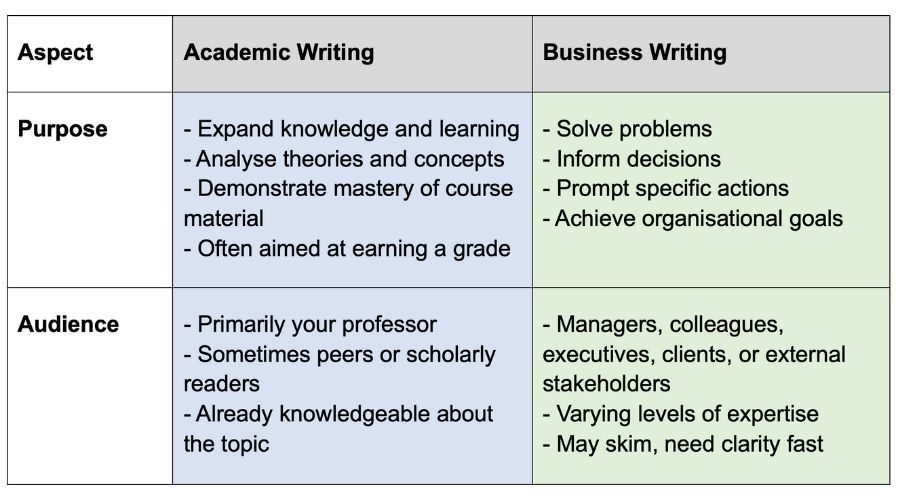
Tone and Language Style
Another major distinction that you need to take note of between academic writing vs business writing lies in tone and language style.
Academic writing maintains a formal, objective tone. It’s typically written in the third person, avoiding “I” or “we,” and steering clear of slang or casual expressions. Sentences tend to be longer, densely packed with information or analysis, and often filled with technical or theoretical language.
But take note that this formality is not accidental.
It should still convey seriousness, credibility, and scholarly depth. In academic assignments, particularly in MBA programs, this tone allows you to demonstrate that you understand complex ideas and can engage critically with them.
Business writing, by contrast, adopts a more direct, conversational style. Here, using the first person (“I” or “we”) and the active voice is not only acceptable but is actually preferred, especially when addressing the reader directly.
The focus is on clarity and conciseness. Sentences are usually shorter, with straightforward vocabulary, so your busy readers can grasp the message instantly.
Although some jargon may appear, it should only be the kind familiar to the intended audience. And unlike in academic writing, there’s no room for filler words or unnecessary adjectives.
Always remember that academic writing may use complex sentences and passive voice, whereas business writing favours clear, concise language and active voice.
In practice, this means an academic paragraph might elaborate at length on a single concept, building a case with multiple layers of evidence. A business memo, on the other hand, states the key point in plain language, often in the first sentence, then follows with only the essential supporting details.
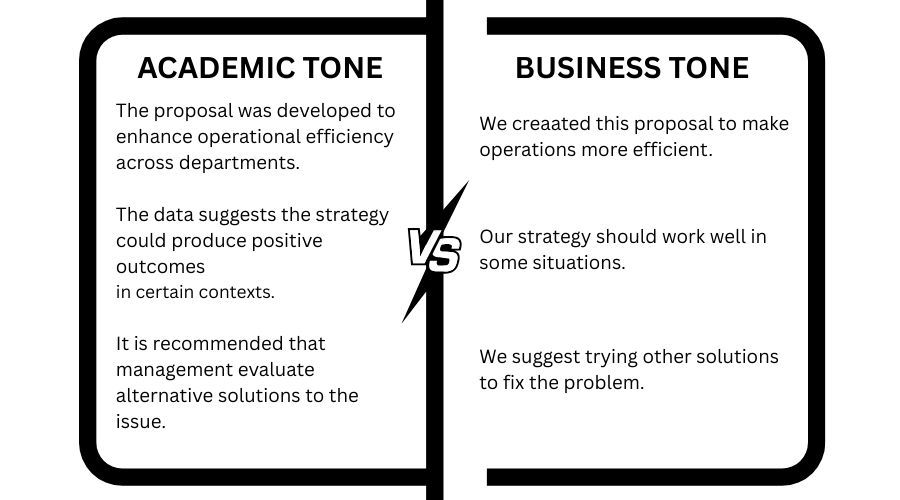
Therefore, as an MBA student, it’s important that you adjust your tone depending on your goal: formal and analytical for assignments, polished but approachable for business communications.
If you can master shift in tone and style, you’ll be a more versatile and effective communicator in both academic and professional contexts.
Structure and Format
When you compare academic writing vs business writing, you’ll quickly notice that structure and format are another big difference.
Let’s start with academic writing. Here, the structure is predictable and standardised. You’ve probably followed it many times: the classic introduction, body, and conclusion.
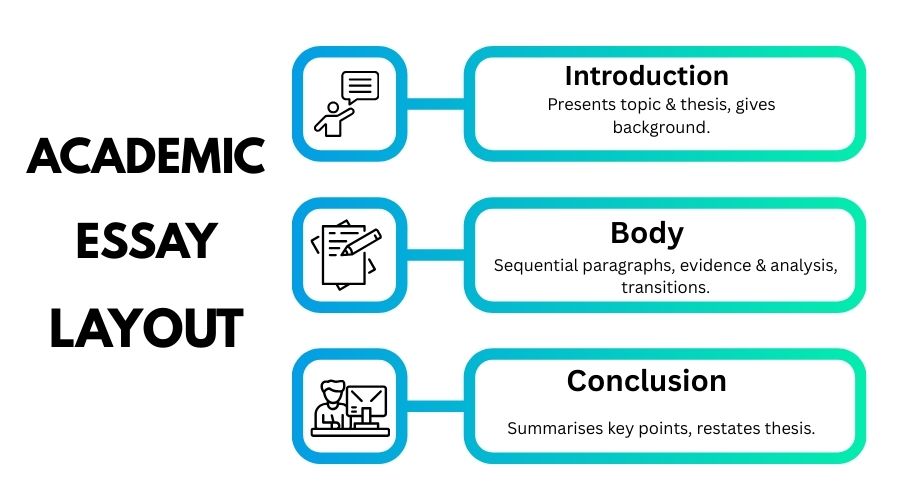
In MBA assignments, you might also need to follow strict formatting rules from your instructor or a style guide. That could mean using 12-point Times New Roman, double spacing, specific heading levels, and even precise citation styles.
Every section has its place, and the argument builds in a logical order toward a conclusion. In other words, there’s a formula. You might feel that this is restrictive, it’s designed to make your work clear, credible, and easy for your professor to assess.
Now, in business writing, the structure is far more flexible, and that’s because it adapts to purpose and audience. A one-page executive summary, a quick client email, a slide deck, and a full project report will all look completely different.
The goal is speed and clarity for busy readers. You’ll often see headings, subheadings, bullet points, and maybe even charts or tables to make information easy to scan. If data can be shown visually, it often is. That’s less common in a traditional academic essay.
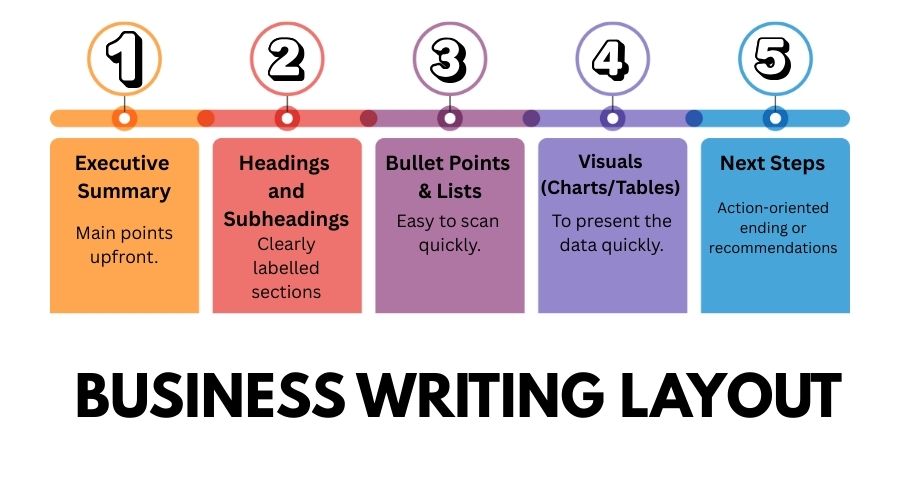
So, what does this mean for you as an MBA student?
It means you have to switch gears depending on the task. A case analysis might follow a formal report style, while a marketing plan could look like a professional proposal.
The key thing to remember is: academic writing will usually tell you exactly which format to follow, but business writing gives you the freedom to choose the layout that communicates your message best.
If you can master both approaches, you can not only meet academic requirements but also create professional documents that get results.
Use of Evidence and References
When you’re switching between academic writing vs business writing, you’ll also need to switch how you handle evidence and references. And trust me, the difference is bigger than you might expect.

Evidence and References in Academic Writing
In academic writing, supporting your arguments with credible research is non-negotiable. Your MBA professors will expect you to bring in theories, data, or scholarly references and weave them into your discussion.
And yes, you’ll need to cite everything in a standard format, whether it’s APA, MLA, or whatever your program requires. That means in-text citations, a full reference list, and sometimes even footnotes.
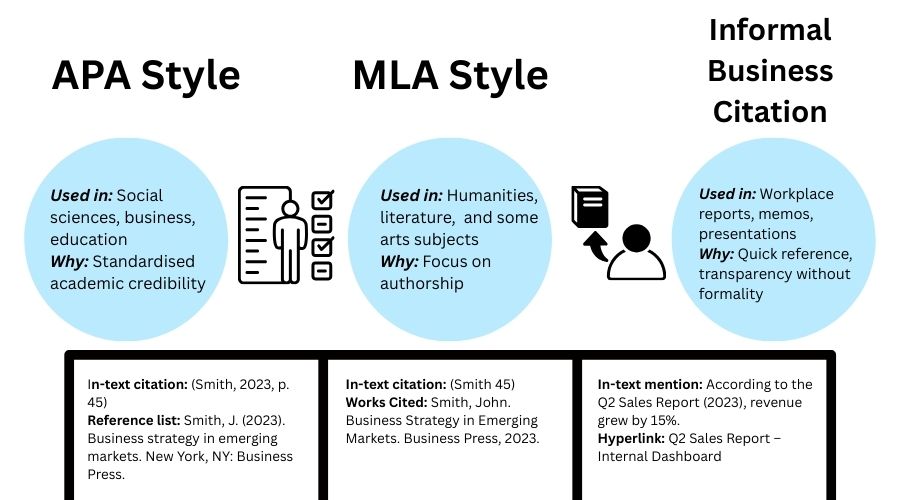
Sure, it can feel tedious, but it’s how you show academic honesty, rigour, and respect for the work of others. It’s also why your MBA research papers often have detailed bibliographies attached.
Evidence and References in Business Writing
Now, move over to business writing, and the rules loosen up, quite a lot. Although you still need to be accurate and transparent, you usually don’t have to follow strict citation styles.
If you drop in a market statistic, an expert’s quote, or an industry report, you might just mention the source in passing, add a hyperlink, or tuck it into an appendix. Many companies have their own referencing habits (or none at all). The priority here is speed, clarity, and making sure your reader gets the message, without wading through formal citations.
That said, one thing doesn’t change: plagiarism is never okay.
Whether you’re writing for a professor or your boss, you can’t present someone else’s ideas as your own. The difference is simply how you give credit. An academic assignment demands full citations; a business memo might just say “according to last quarter’s sales report” and move on.
So here’s the takeaway: in academic work, cite properly and follow the rules to the letter. In business writing, keep it practical, clear, and brief; your reader will thank you for it.
Writing Process and Collaboration in Academic Writing vs Business Writing
Academic writing vs business writing also shows the differences in how you actually create the document. And yes, that includes whether you’re working alone or with others.
Most of the time, in academic writing, it’s a solo mission. Think term papers or individual assignments. You research on your own, you write on your own, and you polish that paper on your own before submitting it for grading.
The process usually involves drafting, revising, and tightening your arguments, all guided by the assignment prompt and your own scholarly research. Even in group-heavy MBA programs, an essay test or a take-home assignment is still your responsibility alone.
You’re starting from scratch, digging into sources, and building your case step by step.
Now, in business writing and the picture changes.
In the workplace, writing is often a team sport. Reports, proposals, and presentations are rarely produced by just one person. You might gather data from multiple departments, draft one section while a colleague works on another, or share a draft around for feedback before it’s final.
Even in your MBA program, you’ll see this in action. That group project? That business case competition? Those will demand collaboration, not just in brainstorming but in actually writing the document together.
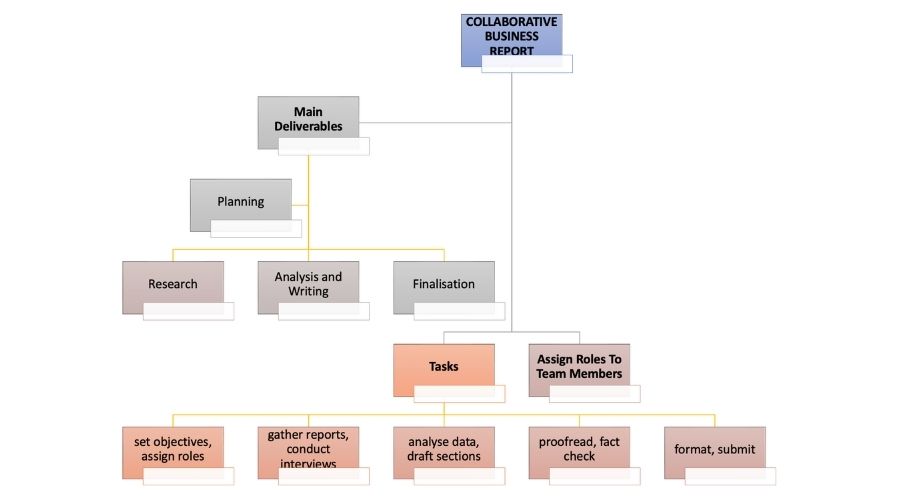
Another big difference: business writing often builds on existing company knowledge or ongoing projects. You’re not always starting with a blank page like you do in academic research, but you’re adding to, refining, or repackaging information that’s already out there.
So, what does this mean for you as an MBA student?
It means adjusting your process. If it’s an individual academic essay, follow your own writing routine. But if it’s meant to simulate a real business task, then you need to lean into teamwork, divide responsibilities, merge different voices, and integrate multiple perspectives.
That’s not just a classroom skill; it’s exactly how writing happens in the real world.
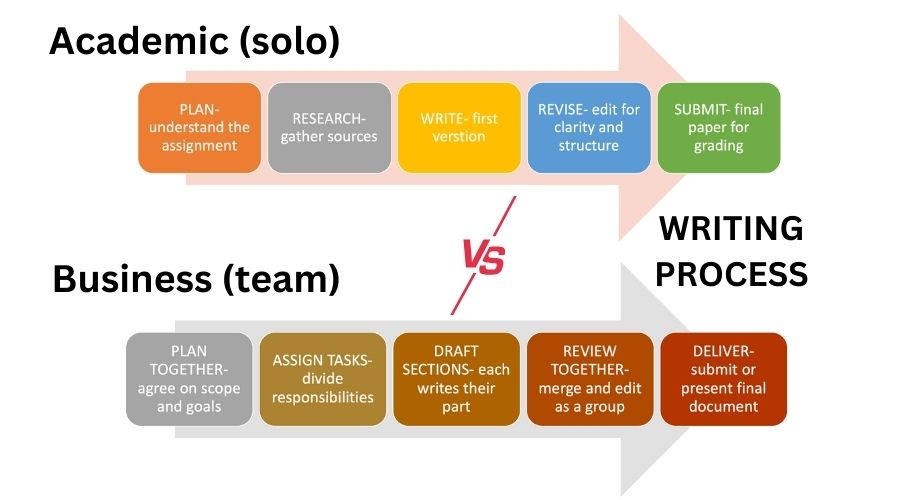
Conclusion: Mastering Both Styles as an MBA Student
As an MBA student, you’ll quickly learn that academic writing vs business writing each comes with its own set of rules. And you need both.
The ability to switch from a detailed, research-heavy academic report to a sharp, action-focused business memo is a skill that will serve you, even long after graduation.
Whenever you start a new task, remember the key differences: purpose, audience, tone, structure, and process. Match your style to the context, and you’ll avoid the classic mistake of using the wrong approach.
And if an assignment feels overwhelming, don’t hesitate to seek guidance, whether to polish your citations or sharpen your executive summaries.
Mastering both academic and business writing makes you a versatile communicator. You’ll be ready to ace your MBA assignments and create documents that make an impact in the professional world.
Good luck and happy writing!
0 Comments
Leave a reply
You must be logged in to post a comment.
